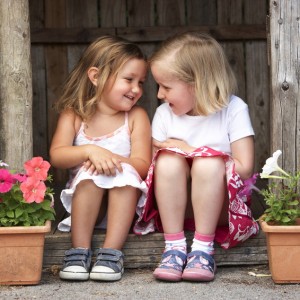 If, as a Director, you follow the trends, research, and best practice in our field, the phrase “the image of the child” will bring your thoughts to a community in Italy, Reggio Emilia, where many have studied the principles and fundamentals of the Reggio Emilia approach. Many of us have been deeply inspired by this philosophy – this way of thinking about children and early education – and it has greatly influenced our own programs.
If, as a Director, you follow the trends, research, and best practice in our field, the phrase “the image of the child” will bring your thoughts to a community in Italy, Reggio Emilia, where many have studied the principles and fundamentals of the Reggio Emilia approach. Many of us have been deeply inspired by this philosophy – this way of thinking about children and early education – and it has greatly influenced our own programs.
In Reggio Emilia there is much discussion around this principle – The Image of the Child. For it is the point from which all teaching and learning begin. What the adults believe about children determines everything. These teachers and parents give great thought to the quality and the instructive power of child space. And so, for the children, how will the environment be designed? What will it include? How will children move through their day? What experiences, opportunities, and possibilities will children be able to explore and discover? And, how will the adults support all of this?
Reggio Emilia schools are places where children come first – before anything else. I’ll repeat that because I, too, believe this – deep in my soul. Children come first – before anything else! Children are the focus of all that happens. Visitors see and hear this message as soon as they enter a Reggio school – it is palpable. The presence of children and their work is everywhere.
Reggio Emilia schools are places where children are powerful. They are in control. The space belongs to them. They create again and again. They make choices and decisions. Everything is accessible and organized for them and is arranged artfully to draw them in. And, yes, they are inspired by what awaits them. They are naturally curious and interested in constructing their own learning – by touching, investigating, exploring, questioning, manipulating, taking apart, observing, discovering, enjoying, listening, discussing, putting together – everything in their environment.
This is so because the adults (both teachers and parents) hold an image of the child that allows all of this to take place. They see children as capable, competent, interested, powerful, creative, curious, thoughtful, imaginative, expressive, engaging, and involved communicators, collaborators, and learners. And, it happens, much like a self-fulfilling prophecy.
How much time have we spent thinking about our image of the child? And, do our early childhood settings reflect the image we hold?
Do we put children first? Are they the focus of our work?
What we do and why we do it are important questions to visit and revisit from year to year. I invite us to look more closely at our work with young children, and reflect upon our own practices of teaching, directing, and leading.
Some questions to get us thinking and focusing – yes, on the Child:
- Do we value and respect all of the ways a child expresses his thoughts and feelings?
- Do we value equally the verbal and nonverbal child? the rational thinker? and the creative thinker?
- Do we listen to what a child says with her words? her behavior? her body language?
- Do we interrupt the thinking processes of a child when we follow a rigid daily schedule?
- Are we driven by the clock? Are so many transitions necessary?
- Do we carry out meaningless activities during the day that are not relevant to the child’s real world and experience?
- Do we pay enough attention to a child’s strengths?
And, the most important one of all, What is our Image of the Child?
I’d love your feedback on this topic.
See also the writings of Loris Malaguzzi and Lella Gandini.

Putting the child first is the only way to truly teach. Erase the self-imposed you and me wall, become one with a child, and let the interests of the child direct the teaching. Emergent curriculum. So what if that wasn’t in the lesson plans! When children are engaged learning and joy happen.
I think that part of society does not see children as capable. They need to be “taught” everything when, in reality, their learning is a very natural progression. In the same way that children naturally learn to crawl, walk, and talk, they are naturally going to continue to progress. They will learn things like colors, and shapes, and develop an interest in writing, without us having to push it down their throats. We don’t need “purple day” to learn about purple. It should all be a natural part of their living. A child that graduated from our school and went to public school had “structured” recess. They needed to learn how to “play” so stations were set up for them to choose from. This is something that kids are quite capable of, if we just let them! Give them space and they know what to do!